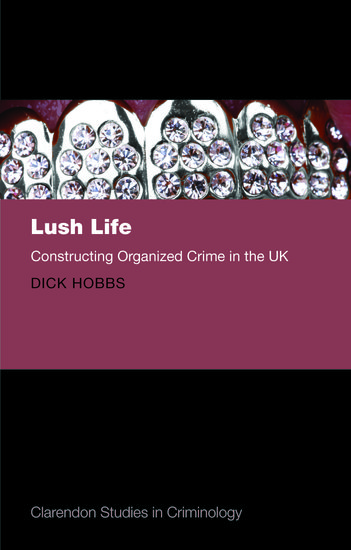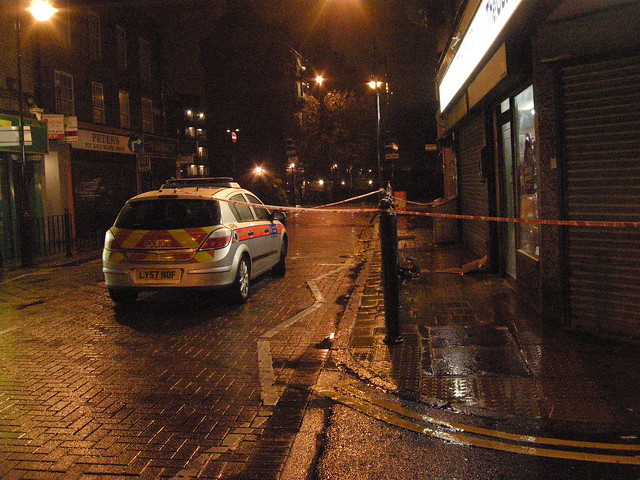Lush Life makes a timely contribution to social scientific knowledge of organized crime in a period of substantial criminal justice and police restructuring, writes Karen Lumsden. In this essential read for sociologists, criminologists, and urban geographers, Dick Hobbs covers the flexible nature of the criminal market, the constructed nature of the notion of organised crime, and the normalisation of criminality. It is a timely reminder of the need to go beyond official and media definitions and representations of organized crime.
 Lush Life: Constructing Organized Crime in the UK. Dick Hobbs. Oxford University Press. 2013.
Lush Life: Constructing Organized Crime in the UK. Dick Hobbs. Oxford University Press. 2013.
Lush Life is the third book in Dick Hobbs’ study of life and crime in the East End of London, adding to his already highly respected books Doing the Business (1988) and Bad Business (1995). The book connects with previous work which stressed the way in which ‘specific political economic environments produced cultural interpretations that located market relations as a central driver of everyday life, before looking at how a professional criminal culture emerged from this environment, and how entrepreneurship had come to dominate both legal and illegal markets’ (p.1-2).
It focuses on Dogtown, a cluster of neighbourhoods in East London that have undergone drastic economic change, are ‘rich only in poverty indicators, and where crime is a deeply embedded characteristic of the local culture’ (p.2). In the same vein as its predecessors, Lush Life contains a riveting and insightful blend of conversations with criminals, ethnographic observations, media reports, and government and authority statistics and accounts, thus providing a unique, detailed and multi-faceted account of the history of working-class cultures and communities in London’s East End, and the related evolution of crime from the twentieth century to the present day.
The aim of Lush Life is to draw attention to constructions of organized crime and the misappropriation of this label by powerful groups. Hobbs argues that this ‘recently concocted concept should be understood within the context of political change, particularly in forms of global governance, post-industrialism, unrestrained consumerism, and the intensity of contemporary illegal trading relationships…’ (p.2). Dogtown demonstrates that the entrepreneurial culture that is at the heart of our notion of organized crime is actually ‘an unremarkable characteristic of contemporary urban life, embedded in the mundane and hedonistic chaos of the city, and located specifically in the fractured rhythms of illegal trading that underpin the pain and pleasure of our increasingly fragmented urban existence’ (p.3).
Chapter 2 focuses on the construction of organized crime in the UK and the institutions and practices that constitute its governance. Hobbs argues that the current perception of organized crime is based on a particular reading of globalization and its attendant attributes, including the ‘expansion of illegal economic activities and its cosmopolitan associations’ (p.13). Organized crime is a North American construct, ‘exported like a criminal justice version of Starbucks’ (p.12). This discussion is extended in Chapter 3 where Hobbs demonstrates precursors to the concept of organized crime and the development of racial stereotyping in relation to acquisitive crime.
In Chapter 4, the connection between industrial neighbourhood and territorially based extortioners is mapped with reference to some of West London’s principle crime groups of the twentieth century, including the Krays and the Richardsons. These iconic names became retrospectively associated with twentieth century organized crime in London. Hobbs explores the authenticity of these claims and the ‘veracity of their enduring criminogenic legacy’ (p.58). From the 1930s to the 1970s, Soho’s underworld of extortion, prostitution, gaming and illegal drinking clubs, involved groups from deprived urban industrial neighbourhoods creating ‘a narrative featuring chaotic, fractitious networks where personal, territorial, and family conflicts were likely to fester and burst internally as amongst strangers, enemies, or competitors’ (p.58-59).

Chapter 6 extends the consideration of territoriality to the construction of the youth gang problem. According to Hobbs, in post-industrial society, youth collaborations are increasingly market-orientated and ‘the drug trade offers an accessible alternative sphere of enterprise to declining opportunities in traditional male employment’ (p.116). Hence, in Dogtown drug dealing becomes normalized and an everyday part of its ‘fabric’ (p.124). These youths seek to ‘locate alternative means of constructing identity, and along the way gain status and respect, generate excitement, have fun – and make money’ (p.125). Despite this, Hobbs notes that the ‘gang genie is out of the bottle, like organized crime it has become institutionalized and embedded in the discourse of local and national governance’ (p.132).
Lush Life makes a timely contribution to social scientific knowledge of organized crime in a period of substantial criminal justice and police restructuring, including, for example, the 2013 launch of the National Crime Agency (NCA), a crime-fighting law enforcement agency responsible for leading the UK’s fight to cut serious and organized crime, which replaced the Serious and Organised Crime Agency (SOCA). We are continually warned of ‘new’ criminal threats, epitomized in the current media fascination with the insurance fraud known as ‘crash for cash’ carried out by criminal gangs, which has been anecdotally linked to organized crime and specific ethnic groups. For the media, the looming specter of organized crime and anecdotal associations with certain ethnic communities provides fertile ground for the scapegoating and ‘othering’ of foreign groups and ‘resented minorities’ (p.37).
The weakness of the book (which Hobbs himself acknowledges) – that it can be seen as merely a ‘partial, personalized view’ (p.3) of the construction of the organized crime concept in the UK – is also its strength, in that Hobbs’ biographical links with Dogtown, his knowledge of local ‘villains’ and ‘wheelers’ and ‘dealers’, and detailed historical analysis of the economic, cultural and demographic shifts (for instance as a result of the decline of dock work) provides us with a historically informed understanding of the evolution of crime in Dogtown, development of the organized crime concept, and its rise to the forefront of (misinformed) government agendas. Furthermore, it (re)situates the local and notions of territoriality at the centre of our understandings of crime. As Hobbs writes: ‘Crime is experienced, enjoyed, acted out, and suffered locally, albeit, like the rest of late modern human existence, as the result of pressures that can be partially attributed to ebbs and flows on trade routes whose myriad of networked connections can be typified as global’ (p.38-39).
Lush Life joins Hobbs’ previous two books as an essential read for students on crime and deviance (and social research methods) modules, sociologists, criminologists, urban geographers, socio-legal studies, fraud studies, social historians, police officers, and criminal justice professionals. It is a timely reminder of the need to question, and go beyond, official and media definitions and representations of (organized) crime.
—————————————–
Dr Karen Lumsden is a Lecturer in Sociology at Loughborough University. She is the author of Boy Racer Culture: Youth, Masculinity and Deviance (Routledge, 2013) and has published in journals including Sociology, Mobilities, Policing & Society and YOUNG. She is co-editor of Reflexivity in Criminological Research: Experiences with the Powerful and the Powerless (forthcoming 2014, Palgrave Macmillan). She is currently working on research into crash for cash insurance fraud and organized crime. Read more reviews by Karen.








2 Comments